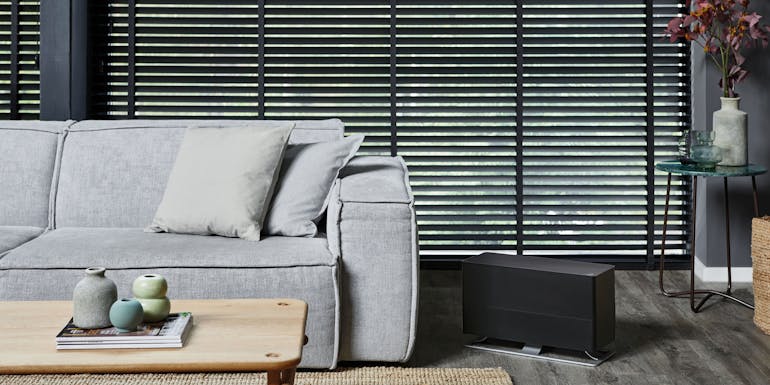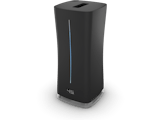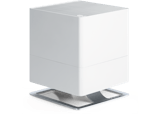
Nadine Walder, 22 December 2022
Humidify the air
Keep warm at home in the winter in spite of the energy crisis
Are you looking to save energy and reduce your heating bills because of the current energy crisis? These days, there are so many tips and tricks for heating your home while saving energy. Now that the cold season is here, this topic is more relevant than ever. In this article, I will tell you about a really easy way to save on your heating bills and still not have to freeze at home. I will explain what perceived temperature has to do with it and how this can be specifically influenced by humidity.
Actual and perceived temperature: what is the difference?
We all know what actual temperature is: it is the temperature measured by an air temperature sensor. In meteorology, it is usually determined at a height of two metres without the influence of heat conduction, ground heat or solar radiation.
The perceived temperature on the other hand is the temperature felt by a person which is influenced by many different factors such as clothing, humidity and wind. The perceived temperature corresponds to the temperature measured when moving slowly in the shade while wearing appropriate clothing for the temperature with average humidity and no wind. This perceived temperature is calculated using the Klima-Michel model, a comprehensive energy balance model for the human body, for example.
When it is cold and windy, the so-called wind chill effect – one of the factors that influences perceived temperature – indicates the sensation of cold. When there is moderate wind (approximately 25 km/h), an air temperature of 4 degrees Celsius can feel like - 1 °C, for example, while if the wind is strong (approximately 50 km/h), 2 °C can feel like - 5.4 °C.
Using humidity to specifically influence perceived temperature
The counterpart to wind chill is the so-called heat index which indicates the sensation of heat and is a combination of temperature and relative humidity. The index is only used at warmer temperatures because humidity no longer has any influence on perceived temperature at temperatures below 20 °C. The Humidex that was developed in Canada is similar to the heat index but easier to calculate and starts at lower temperatures around 20 °C.
Until 2020, the heat index was used to issue heat warnings in Switzerland. The combination of a certain temperature and humidity can pose health risks. For example, with a level of humidity of 65%, a temperature of 30 °C can feel like 40 °C which is sufficient to cause severe discomfort and heat-related illnesses such as sunstroke and heat cramps.
While it is not possible to influence the humidity outdoors in order to influence the perceived temperature, it is possible indoors. The relationship between humidity, actual and perceived temperature plays an important role here too.
Thanks to ideal humidity you can turn down the heating
Now you may be wondering how all this information can help you heat your home while saving energy? The trick is simple and can be logically deduced from the relationship described above. If you have a room temperature of 20 °C and humidity of 40% at home, it will feel exactly like 20 °C. If you increase the humidity by just 5%, the temperature will already feel as if it has gone down to 21 °C, according to Humidex. At 50% humidity, it will already feel like 22 °C. So if you are used to a room temperature of 22 °C and you want to reduce the temperature by 2 °C in order to save on your heating bills, you can do just that. Simply keep the humidity at a constant 50% and you won’t need to worry about freezing because it will still feel like 22 °C.
A humidifier can help you keep the level of humidity constant. Since the relative humidity indoors drops during the winter and the air often becomes excessively dry, using a humidifier is recommended anyway. So by purchasing one, you can kill two birds with one stone: firstly, by creating a healthy indoor climate that is not too dry and secondly, by being able to turn down the heating – one of the biggest energy-guzzlers of all – and effectively reduce your heating bills. For using a humidifier is guaranteed to be more energy-efficient than keeping the room temperature at 22 °C.
If you have questions related to indoor room climate, please get in touch with us. Or subscribe to our newsletter to regularly get informed about current topics regarding indoor climate, experience reports or Stadler Form insights.












